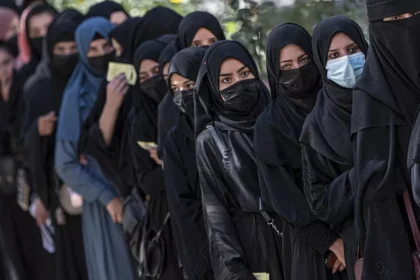RASC News Agency: The Taliban are once again facing intense domestic and international condemnation after their authorities in Mazar-e-Sharif demolished the memorial statue of Amir Ali Shir Nava’i, the celebrated 15th-century poet, philosopher, and statesman of the Timurid court. The destruction triggered a storm of outrage across Afghanistan’s cultural and intellectual circles and provoked a sharp diplomatic protest from Uzbekistan, where Nava’i is revered as a foundational literary figure. The move was widely branded as an act of cultural desecration. Civil society networks, writers’ associations, political figures, and ordinary citizens flooded social media with condemnations, describing the demolition as part of the Taliban’s longstanding campaign of cultural erasure. Dozens of organizations jointly declared that the obliteration of Nava’i’s likeness was not an accident but a calculated assault on Afghanistan’s plural identity and a continuation of the group’s entrenched hostility toward symbols of art, history, and non-Pashtun heritage.
In Tashkent, Uzbekistan’s Foreign Ministry swiftly demanded answers. Spokesman Akhror Burkhanov stated on Wednesday evening that his government had formally contacted the Taliban seeking a “logical and official explanation” for the demolition. For many in Central Asia, the Taliban’s action represented not only a national insult but a broader assault on the cultural memory of the Turkic world. Attempting to contain the fallout, Qari Abdulrahman Hemmat, the Taliban-appointed mayor of Mazar-e-Sharif, announced that a reconstruction project would soon begin in District Three of the city. He claimed that the new monument would feature an inscription, commemorative pillars, landscaping, and fencing, to be completed within one month at a cost of 1.5 million Kabuli rupees. He further alleged that the project would be financed by “local residents of Balkh.” Yet observers view these assurances as little more than cosmetic damage control a hasty attempt to paper over a deliberate act of cultural hostility.
Civil society organizations representing Afghanistan’s Turkic minorities were unequivocal in their denunciation, calling the demolition a “direct assault on the collective identity” of their communities. Rahila Dostum, daughter of Marshal Abdul Rashid Dostum, went further, writing on X that “the Taliban are a culture-hating group whose targeted program includes the systematic destruction of historic monuments and the erasure of Afghanistan’s cultural symbols.” For many activists, the Taliban’s sudden promise of reconstruction only underlines their duplicity. “This is not about preservation, it is about concealment,” a Balkh-based cultural activist told media. “Their record makes it clear: the Taliban’s hostility to culture is not incidental, it is ideological.” Indeed, critics point to the obliteration of the Bamiyan Buddhas in 2001, the looting of museums, and the silencing of artists and writers under Taliban rule as evidence of a consistent, programmatic war against culture.
Analysts argue that the rebuilding project, even if completed, cannot wash away the Taliban’s reputation as a regime defined by cultural vandalism. Instead, the demolition of the Nava’i statue will be remembered as yet another example of the group’s entrenched opposition to Afghanistan’s rich, multi-ethnic heritage. As international outrage continues, the Taliban find themselves struggling once again to reconcile their image with their actions revealing a regime that destroys in haste and rebuilds only when forced under the weight of condemnation.






